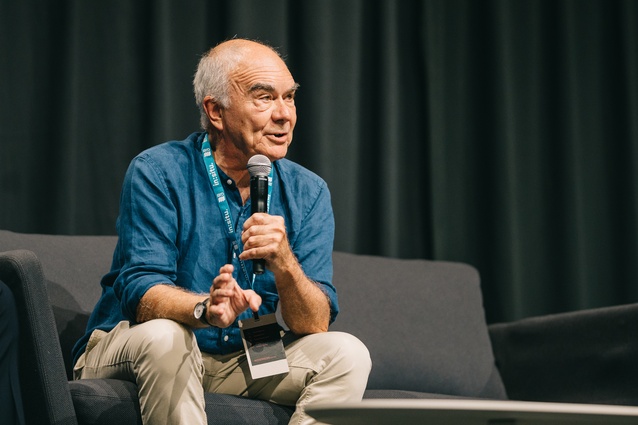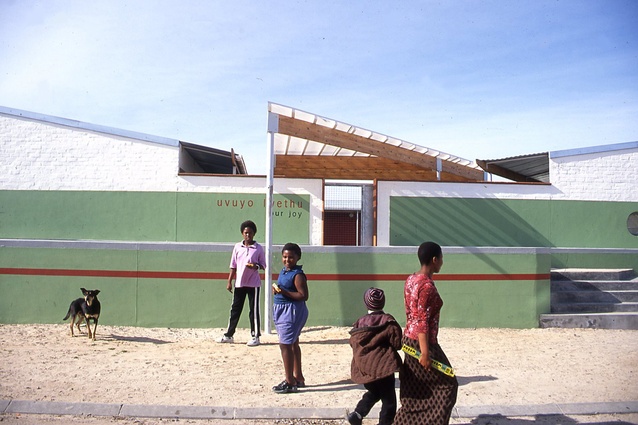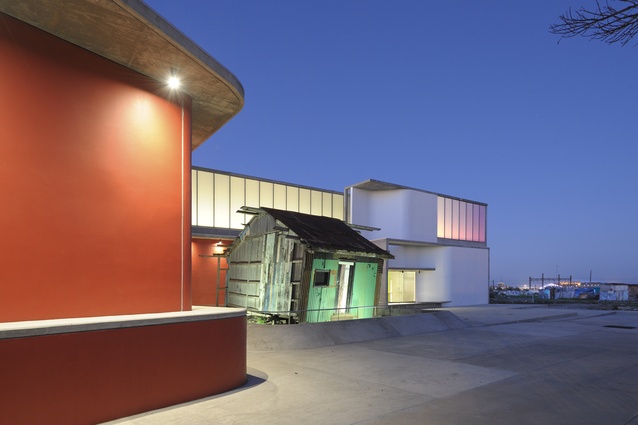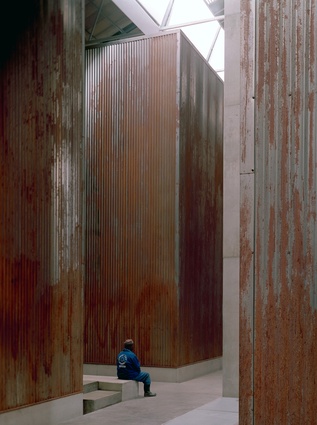In:situ 2019 series #2: Jo Noero
In the world’s current housing crisis, many architects ask themselves how to combat a problem with no real answer. Some chose to ignore the issue, others seek to resolve the issue through their own design knowledge. With the rising population and depleting resources, how do we as architects take it upon ourselves to design responsibly and with limited means?
In the second interview from the 2019 in:situ conference, South African architect Jo Noero speaks with Ashleigh Darroch about this very issue. It is clear upon meeting Noero what his standing is on the matter of social housing. He has based his practice around providing beautiful yet resourceful buildings that are not overzealous in their use of space and enable families to make them what they desire.
Ashleigh Darroch (AD): You said you haven’t been here before, and you’ve only come to Auckland, but have you noticed any similarities between what you know of in South Africa and New Zealand architecture?
Jo Noero (JN): Big differences – I think our cities are structured differently, and the racial composition of people that occupy the city is very different. The three major cities in South Africa are Durban, Johannesburg and Cape Town. Cape Town is an old city; in colonial terms it’s almost 400 years old; it’s old as New York City. Cape Town’s population is about as large as that of New Zealand. Johannesburg has a population of nine million people and it’s only 100 years old; it was a gold mining city. It has been rebuilt four times over 100 years. And then you’ve got Durban, which is a huge sea port containing three major groups of people including the Zulu people, white colonialists and one of the biggest Indian populations outside of India.

AD: One thing that has interested many is when you refer to luxury in architecture and that luxury and necessity should be indistinguishable. Do you purposely not include ornamentation for that reason?
JN: The thing about luxury and necessity is you need necessity to live, and luxury is something that is socially thrown on you: it is not necessary to conduct a life but it is something that society tells you is good to have. In my office we’ve battled what is necessary and what is luxurious, and I don’t think we have a clear idea where the boundary lies. I think it has to do with the styling of buildings. I don’t like the idea of fashion in architecture, but styles are fine. We all have different styles, and that’s fine. We have historical styles that we can learn from and use, and some styles carry with them a greater emphasis on luxury than others.
The thing that you always associate with modernity is a stripped down architecture, which is essential – and that’s what I’m interested in. Its difficult to do that and, at the same time, satisfy peoples needs to be comfortable as they’ve got all these attractions that are led by consumerism and all that. So, it’s a difficult question, but what I try to do is illustrate how unequal the world is that we live.
It’s a difficult thing to bring luxury into it because space is, in fact, a luxury. The more money you’ve got, the more space you can afford. There’s this crazy thing: the richer people are, the more space they have to live in, and the poorer people generally tend to have larger families, and it’s an economic necessity, but they can afford less space. I think this is something we haven’t come to grip with as architects – we just don’t know how to deal with it. And, when we leave it to the market, it becomes terrible.
AD: You said in your talk earlier that the ideal house size was 150m2, and this was the constraint that you designed within for residential projects. With this in mind, what is your opinion then on the lavish, big commissions that architects are becoming famous off?
JN: I’m just not interested in it. The argument I was trying to make – and I ran out of time – was to say that I live in a country where about 45 to 50 per cent of people live in cities and have such minimal space to live in. You have a family of say four to five people living in a shack that is eight or 10m2. Then, on the other side of town, you have a family that live in a house of 4000m2 with only four family members.
So, what I’m trying to say is that if you actually take space as a resource, if it’s a resource that we have, then lets distribute it more equitably. For me, ethically and in my practice, we are comfortable with building a house for someone with whatever means – they can be billionaires and we still say 150m2 is enough for them to live in. The fact is that if we build more space for them, we are taking space away from people who really need it. And, that’s the simple way of how we work it.
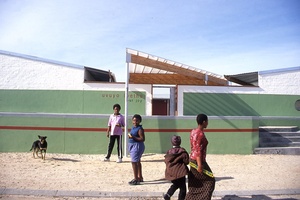
AD: Something of interest in your talk was the markets people had started that took place underneath the elevated highways. How do spaces like this reflect South African architecture and how have these developed since 1994 with the end of the apartheid?
JN: I think the thing with the market under the highway is that, under apartheid, black people were restricted in terms of the space they could occupy in the city. After 1994, all those restrictions were lifted, and the city was open to all. What I’m interested in is the modern infrastructure and the way in which there have now become really nice places for people to set up informal, makeshift spaces.
And, there’s this idea that you have modern infrastructure designed for one purpose but actually, underneath it, a whole other range of activities is supported by it, which people have decided for themselves. That’s a really interesting idea, that the city offers hidden potentials that we can only realise when the people have the freedom to occupy the city in their own way.
AD: I’m assuming that this aligns with what you were saying about how you can’t force a program into a building? I think you touched on form in your talk, but what is your opinion of the well known saying, “form follows function”.
JN: I think you have purpose, and without purpose you can’t have architecture. We design buildings because someone has a need, and we need to satisfy that through the spaces that we make. So, the first thing to do is to understand what the nature of that need is. Then, what we do is we explore, through the design process, the spaces that we believe would satisfy that particular purpose. There is an iterative process that happens between purpose and form that comes backwards and forwards all the time until we reach that nice point where we can say the purpose is satisfied by the space.
There’s a beautiful way in which its described by Alvar Aalto the Finnish architect; he says when we design, we design in two personas: the first persona is the adult, and the adult sets the rules of the game. So, we set up the grid, we set up the parameters for the design, and once we’ve done that, the child comes in to play and breaks the rules in creative ways. To accommodate those things that aren’t easily fitted within the rules set up by the adults, he says, that’s when you make architecture; and I think that is true.
There is also a distinction between program and purpose. Purpose is activity; it is about using space and trying to find a poetic way of being able to give expression to that purpose. Like making a chair, you can make a beautiful chair that is absolutely comfortable and looks great, but what modern architects have tended to do over the last while is they’ve lost the sense of designing for purpose. What they do is design for program.

Some can put all the programs into square boxes and fit them on top of the other and you end up with a programmatic building, but there’s no poetic interpretation of purpose; you’re not making this a special place for people; you’re just shifting space around.
AD: You were a young architect through the apartheid era. How do you now integrate indigenous cultural ideals with modern architecture?
JN: You see, I don’t want to cheapen African culture. We haven’t yet theorised African architecture and so, I have lots of colleagues who talk about making round buildings because they are like the original round huts that black people lived in. I really disagree with that. I think it’s patronising.
What we do to avoid this is look at the idea of the everyday; we look at how people live in the city, how they use spaces in the city and what they do in those spaces, and we use that for the basis to make what it is that we do. For me, that’s much more truthful. Without imposing any cultural idea of what African architecture should do. Should it have horns? Should it look like a zebra? I don’t know, and I don’t think anyone does.
AD: So, what I’m mainly hearing is that vernacular is not copying form or culture, it is more about interpreting the context of the culture and how that inspires building form. Is that something you try to do with all your projects?
JN: Yes. There is a famous exhibition called Architecture Without Architects. The guy who did it made a really good point; he travelled around looking at vernacular architecture in a lot of countries and said this architecture is nicer than what a lot of modern architects are doing. This, of course, caused a huge shock to the architecture community.
Vernacular architecture is made by people for themselves, and it’s clearly honed over centuries of trial and error. What we can do is look at it and understand what lies underneath the form that’s been made. To copy it, I think, is a copout. It imitates what people have spent blood sweat and tears trying to perfect over a long period of time.
AD: I suppose that can be employed in New Zealand architecture. Not to try and create buildings that mimic that indigenous Māori culture with patterns or building shape, but it is more about providing spaces for people in the everyday and how they conduct their lives. That’s how to create an architecture for all?
JN: Very much so. Completely.
AD: You speak a lot of the responsibility that architects have, but also that you cannot enforce how you want to see your building used. Can you elaborate more on this?
JN: Architects have a responsibility, but you cannot push how you want to see the space used. I believe architects have an ethical responsibility. Much of it lies in the relationship between the architect and the project they accept. We need to interrogate that more deeply in the sense that we know it’s getting used for a good purpose and that the people using the spaces will be involved in the design of the spaces. I don’t think we do enough of that.
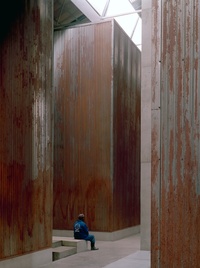
When some architects get commissioned for a big office building they don’t talk to the cleaning staff, or the security guards; they just listen to the managing director and make sure his office has a great view. I would argue, that is the basis in which one can make a decision about whether we move forward ethically and accept the commission or not.
We must also understand that no matter how beautifully we design that building, when people occupy it, they might occupy it in very different ways than what we imagined. That has to do with human agency, and we cant be blamed for it, but we can know that we acted ethically at the time.
For me, the interesting thing is how do we design buildings that have such a form and a presence that it doesn’t matter what people put towards it, it will still have a value. I think we don’t think enough about that as architects. We live in a world where things change all the time, and they change very rapidly, and we have no means of being able to control how rapid that is. That’s why – you can see in my work – we make very precise form, and we find that works as people can come in and use the space how they desire.
AD: I’ve noticed that your firm is heavily involved in social housing, The Table House project in particular. Did you design these parochially for the inhabitants of Cape Town, or do you see these structures as a solution to housing crises all over the world?
JN: I did that project in collaboration with a really good Berlin architect Rainer Hale. He came to Cape Town and then I went to Berlin. We were going to take that idea and see if we could use it for refugee housing in Berlin, but it didn’t take off. What we were really trying to say is every family’s needs are unique. In an ideal world, it would be great to allow each family to determine how they wanted to live. So, what is it the architect can do? Instead of designing completed buildings, maybe what we can do is design a framework that will enable people to occupy it and take it and make it what they desire for that family.
Rich people can get an architect to design a house for them; they can tell the architect what they want and get the house they want. Poor people just get stuff. They get a square box and get told, that’s what you get, social housing. How do we find an opportunity through the design processes and ideas that we have where poor people still have a degree of control and autonomy in choosing how they want to live? One thing we do is (where we can) source local material and members of the community to help build the projects, so they have a say in these structures.
The 2019 in:situ conference was presented by the New Zealand Institute of Architects. The primary sponsor for this event was GIB.

